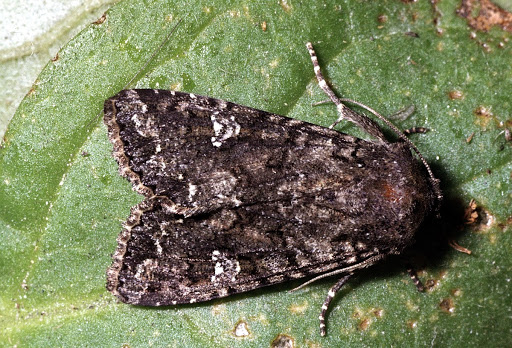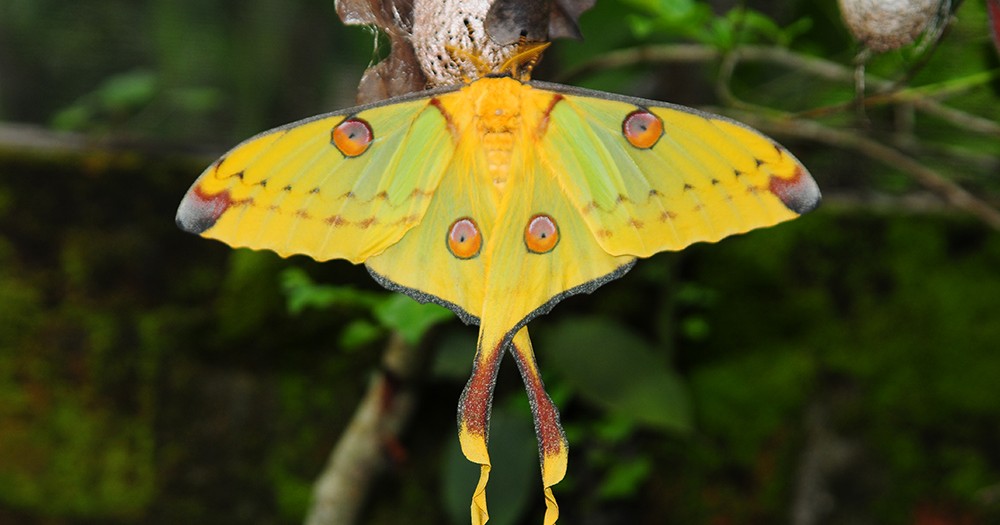Cabbage Moth (Mamestra brassicae)
Cabbage moth of the owlet moth family has an extensive geographic range, extending throughout Europe, Asia, and parts of Africa. Infamous as a pest, it causes immense damage to crops, particularly those of the Brassica genus, including cabbage, Brussels sprouts, and broccoli.
en.wikipedia.org
Scientific Classification
- Family: Noctuidae
- Genus: Mamestra
- Scientific Name: Mamestra brassicae
Description and Identification
Caterpillar
The cabbage moth’s caterpillar goes through a six instar development process, with the color and appearance changing with each phase. It appears light green in the first instar. Certain physical features like three pairs of legs alongside an anal appendage towards the end of their abdomen even develop during this time.
The color remains the same until the fourth instar. The dorsal part attains a brown coloration, and the ventral region becomes yellow, besides a copper-colored head. A dark stripe also runs through the middle of their body, while light yellow lines appear on both sides. During the final instar, the body darkens. Further, the head remains copper-shaded while the stripes become less visible. The larva also develops a hump on the dorsal part of its body as it enters the pupal stage. The caterpillar stage lasts between four and six weeks, where it attains an average length of 4 to 5 cm.
The younger larvae eat the top surfaces of the leaves. In contrast, the older ones chew the leaves and their petioles, damaging the soft tissues and skeletonizing them.
Pupa
The pupae, 2 cm in length, have a yellowish-green appearance at the onset. Later, they turn brown, with a glossy body. They remain encased within the cocoon in the soil, with the pupation stage taking place in winter. The adult emerges in 10 – 15 days.
Adult Moth
Sexual Dimorphism: Present
Color and Appearance
Forewings: When opened, they appear grayish-brown or black with a kidney-shaped marking bordered in white placed in the center. When closed, the color remains the same, with the white spot partially visible.
Hindwings: When opened, it is light brown with a faint spot at the center. When closed, there is no change in its shade and pattern.
The hindwings are darker than the forewings.
It has a grayish-brown head and thorax with spots of white. The abdomen also is of the same color as the head, though a little paler.
Average Wingspan: 3.4 – 5 cm
Flight Pattern: Not recorded
Season: May – October
Quick Facts
| Distribution | Europe, Asia, parts of Africa |
| Habitat | Garden, woodlands, cultivated fields, open countryside |
| Predators | Wasps, beetles, spiders |
| Lifespan of adults | 7 – 10 days |
| Host Plants | Cabbage, Brussels sprouts, cauliflower, broccoli, tomato, sunflower, tobacco, beet greens, lettuce, spinach, sunflower, radish, rhubarb |
| Adult Diet | Not recorded |
Did You Know
Certain wasp species can parasitize the cabbage moths, thus used as a control measure to lessen their population. This move has proved successful, and they have been able to bring in a drastic reduction in the number of cabbage moths in fields or near plantations.
Scientific Classification
- Family: Noctuidae
- Genus: Mamestra
- Scientific Name: Mamestra brassicae












